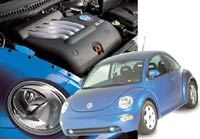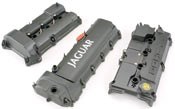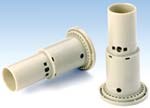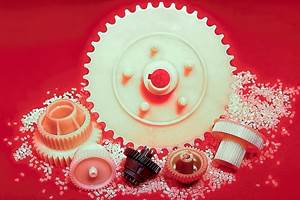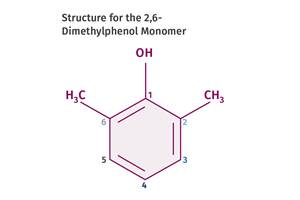Strength and Beauty - New Nylons Bring Both To Under-Hood Parts
Usage of polyamides in U.S. under-hood parts could double in the next decade if nylon 6 and 66 follow European trends toward large panels that not only protect but beautify the engine compartment.
Nylons are preparing to invade engine compartments in U.S.-built vehicles. Following on European experience, polyamides are set to replace metals and thermosets be cause of their lighter weight, low manufacturing cost, and increased freedom of parts consolidation. To succeed, nylons will not only have to prove their ability to withstand heat, impact, chemicals, and warpage, but now they will have to look good, too.
Currently, around 120 million lb of nylons, mostly glass- or mineral-reinforced, go into engine compartments of U.S.-built cars. Biggest existing uses are the air-intake manifold, now 70% converted to nylons, and components that manage and control fuel, coolant, and air transfer. Nylon’s growth rate under the hood is around 6%/yr.
Metal and thermoset replacement is the key to future growth, especially because U.S. auto builds in 2003 are projected to be flat or down. Sources are confident that even a 50% conversion of newer applications could double demand for nylon within decade.
The gathering nylon invasion is heavily concentrated in several large, integrated flat panels that surround, protect, and even beautify the under-hood area. They include engine (or “beauty”) covers, rocker panels (also known as valve, cam, or cylinder-head covers), oil-sump underbody panels, throttle-body housings, and multi-functional assemblies used to circulate air, fuel, and liquid coolants.
Illustrating this trend are the engine covers for Toyota Sienna mini-vans and potentially other U.S.-made vehicles (see cover). The 2-lb, glass-filled nylon 6 parts shield and protect clusters of under-hood parts.
Once used mostly in German-made vehicles, the nylon engine cover is now proliferating worldwide, one reason being the visual impact an attractive-looking engine compartment can have on the showroom floor. Furthermore, Toyota’s molded-in-color covers are among the first to dispense with painting and its associated costs. The stimulus for Toyota’s engine-cover programs is a new glass-reinforced nylon 6 supplied by DSM Engineering Plastics. Though developed specifically for high flow, the material also provides an unusually attractive, resin-rich surface.
As this one example suggests, the muscle behind nylon’s growing automotive penetration is new-generation resins tailored for under-hood roles. The most notable are high-flow nylon 6 and 66 grades that impart elevated toughness and stiffness. In addition, new functionalities like laser weldability, glycol resistance, and friction resistance are being built into new nylon grades.
Success in engine covers
“Aesthetic standards long taken for granted in car interiors are spilling into the engine compartment,” declares Rob Crowell, DSM marketing v.p. Critical-appearance parts now include not only engine covers but also acoustic gaskets to control NVH (noise, vibration, harshness), he notes.
Standard nylon 6 looks like what it is: a rugged workhorse. To enhance stiffness and dimensional stability, 30% to 50% glass reinforcement is added, which in black parts creates visual and mechanical knit-line defects that typically can be hidden only by paint. Resin suppliers like DSM, Rhodia, DuPont, Bayer, and BASF have come up with a cost-effective solution in novel high-flow nylon 6 grades that enhance surface quality and productivity.
To avoid painting its engine covers, Toyota turned to DSM’s Akulon Ultraflow high-flow nylon 6 with 30% glass. John Sellers, nylon 6 product manager, says the compound has at least 50% higher spiral flow than an equivalent standard version, at little or no trade-off (about 5%) in mechanical properties. Higher flow translates into 25% shorter cycle times and makes it feasible to mold at a lower temperature or using a lower-tonnage press.
“But the critical benefit is improved aesthetics,” states Crowell, who notes that improved rheology eliminates knit and flow lines and creates richer surface textures. DSM’s Ultraflow provides visual appeal without painting plus a fourfold reduction in warpage.
DSM materials have already been adopted for engine covers on Citroen cars in Europe and Volkswagen Beetles made in Mexico. DSM’s high-flow nylon 6 family is also finding use in exterior automotive parts like roof racks, as well as lawn-and-garden equipment, power-tool housings, and furniture.
Rhodia’s high-flow Technyl Star nylon 6 has won roles in beauty covers in Europe, and U.S. programs are in development. This polyamide reportedly has a unique chain structure that yields flow properties superior to standard nylon 6, permitting 30% lower injection pressures, 10% shorter cycles, and 72° F lower processing temperatures. Technyl Star also has potential in rocker covers, door handles, and front-end modules.
U.S. users are exploiting the resin’s high flow to design more complex geometries into parts. Tec Air in Willow Grove, Ill., uses a high-flow Rhodia nylon 6 for a 5-lb, 22-in.-long engine cooling-fan assembly that integrates blower wheels and other air-transport components. It appears on the Chevy Trailblazer and other General Motors vehicles.
Bayer Corp. is bringing to North America a series of EasyFlow glass-filled nylon 6 compounds developed by its parent company in Germany. Their enhanced flow is aimed at engine covers and underbody (oil-sump) shields.
Bayer also developed a high-melt-strength nylon 6 for extruding glass-reinforced, 6-mm-thick sheet. The sheet is designed for thermoforming into engine shrouds, underbody panels, and sound shields. It’s aimed at lower-volume jobs in which lower tooling cost makes thermoforming more practical than injection molding.
BASF supplies a 35% glass-reinforced nylon 6 for use in engine covers and has just introduced a lower-density, 10%-glass/20%-mineral version that provides additional cost and weight reduction.
Albis Plastics has developed color compounding technology that is said to give glass-reinforced nylons a competitive edge over metals in visible parts like engine and rocker covers, as well as auto interior and exterior parts and power tools. Technical-service specialist Simon Boyes says the goal is to provide molded-in-color alternatives to typical “paint-in-black” decoration of under-hood parts. Another purpose is to allow letters or logos to be embossed on parts, yet avoid the swirl-line defects often associated with them.
Albis’ flow-line optimized (FO) nylon compounds draw on controlled pigment particle size and other proprietary technology to neutralize or eliminate knit-line defects that often mar reinforced nylon parts in black or other opaque colors. Black is no longer the only option for under-hood components. Today, there is demand for metallic colors and even hot-red shades. Albis offers flow-line-free (FF) nylon color compounds that hide flow lines with metallic pigments. Mercedes Benz, BMW, Audi, and other OEMs are using Albis’ color technologies in Europe. A BMW Series 3 engine cover in glass/mineral-reinforced nylon 6 uses an FF compound with a brushed-silver effect that resembles aluminum.
Battle for rocker panels
Another tempting target for U.S. compounders and molders of reinforced nylon 66 is rocker panels. These large parts (24 x 10 in. is a typical size) must withstand high heat and maintain dimensional stability to prevent leaks. Aluminum currently has a two-thirds market share in the U.S., and the remainder is compression molded thermoset vinyl ester and polyester bulk molding compounds. Although BMC’s penetration is on the upswing, several nylon makers—DuPont, Rhodia, Bayer, BASF, and Ems-Grivory—are jumping into the fray with glass- and glass/talc-reinforced nylon 66 compounds, while DSM is aiming its Stanyl nylon 46 at this market.
“We’re on the brink of replacing the incumbents with nylon 66 rocker covers in the U.S.,” declares David Flitman, a DuPont global business manager, who projects 20% annual growth in this application. He cites success in Europe, where nylon covers predominate. One example is Mercedes-Benz in Germany, which uses 35%-glass nylon 66 from DuPont in a rocker cover made by Mann & Hummel.
Philippe Guinot, Rhodia’s North American nylon director, sees promise for nylon in rocker panels here but cautions that the North American market is very different from that in Europe. Car engines and covers here are larger and more demanding in terms of dimensional stability and seal integrity. Guinot adds that the competitive landscape in the U.S. is different, making thermosets highly cost-effective.
Wil Conner, automotive manager at BMC Inc., claims a decade of North American experience with thermosets has resulted in zero failures for BMC covers. He adds that excellent long-term creep resistance and high dimensional stability make BMC covers suitable for the large engines favored in the U.S.
Dana Corp.’s Plumley Sealing Div. in Paris, Tenn., molds both thermoset and nylon rocker panels. General manager Dwayne Matthews says thermosets provide excellent durability and NVH characteristics, and make up the vast number of plastic rocker panels in the U.S. However, he says nylons are favored by greater recyclability, weight reduction, and design freedom. Reflecting this, Plumley is developing a glass/mineral-reinforced nylon 66 cam cover for Jaguar that integrates the cover, gasket, and oil/air separator into one lower-cost module.
Increased design freedom offered by nylon 66 rocker panels is largely untapped in U.S.-built vehicles, says DuPont’s Flitman, who cites oil separators, air cleaners, gaskets and connectors as parts that can be integrated into rocker panels. Ford in Latin America and Mercedes-Benz in Europe have already integrated the oil separator into a cam cover molded of DuPont’s nylon 66. Flitman adds that there is potential for integrating the air-intake manifold and rocker panel into a single multi-functional assembly.
In Germany, Volkswagen and Audi use rocker panels molded of Rhodia’s 25%-glass/15%-talc nylon 66. In one case, Rhodia supplies compatible compounds that permit ultrasonic welding of the oil separator to the panel.
Rhodia’s Technyl Star nylon 6 compounds are now being tested in Europe to replace nylon 66 in smaller rocker panels. These materials reportedly match nylon 66’s mechanical properties, but their enhanced flow helps cut cost by 10%. Rhodia hopes to tap the synergy between its nylons and improved silicone-rubber gasket materials developed by a sister company.
More targets for nylon
Another metal-replacement application opening up for nylon 66 is injection molded sump panels for engine and transmission oil containment. These large parts (typically 30 x 50 in.) must resist warpage, cold impacts, peak temperatures of 150 C (302 F), oil, and salt. Metal underbody panels are heavy and low-cost. That makes parts consolidation essential to nylon’s economic viability. The first commercial success in this area is a BMW 7-Series automatic-transmission assembly made of Bayer’s 35%-glass nylon 66. It integrates multiple parts and saves space under the hood. BASF is working on concepts to integrate the oil pan, permanent filter, and oil pump into a single underbody module of nylon 66 with 35% glass.
An air-induction part that has long defied conversion from metal to plastic is the throttle-body housing. This bastion has finally fallen to 30% and 35% glass-filled nylon 66 supplied by BASF in parts for Renault and Peugot designed by France’s MGI Coutier. They provide 50% weight savings versus metal.
Air-intake manifolds are a major success story for nylons, since most have now been converted from aluminum to nylon 66. Initial designs used lost-core molding, but more recent AIMs have switched to injection molding of twin shells of nylon 6, which are joined by vibration welding.
However, under-hood space limits and incorporation of ever-more-sensitive electronics make vibration welding less than optimal for joining AIM halves. In response, Bayer has adapted nylon 6 for laser welding, which is gentler and permits more compact designs. For one program, Bayer modified three glass-filled black compounds to be laser-weldable. Recently developed coloring technology allows black parts to be made transparent to laser light.
Colors other than black are appearing in AIMs, too. BASF tailored a 30%-glass nylon 6 compound for an Audi AIM made by Mann & Hummel. For the AIM’s upper, visible half, BASF developed a molded-in-color, titanium gray compound.
DuPont, a pioneer in the emergence of the welded AIM, sees continuing roles for both nylon 66 and nylon 6 in the application. Flitman says nylon 66 remains dominant in AIMs used in U.S.-made cars today. It seems certain to retain a strong position in designs that are highly-integrated or that face extreme thermal requirements—such as engines in which exhaust gases are recycled. DuPont has developed laser-weldable nylon 66 compounds suitable for AIMs having especially intricate welding geometries.
Honeywell Plastics also has developed new nylon families that provide enhanced appearance for applications like fuel-filter lids and exterior parts like mirror brackets. These easy-processing High Modulus Glass (HMG) reinforced nylon 6 compounds are suitable for gas-assist molding and replacement of parts previously made of metal or long-glass reinforced polypropylene.
Honeywell also recently came out with UltraTough BU501, an unfilled nylon 6 designed to optimize weld- and knit-line strength in under-hood parts. It retains excellent toughness at -40 F.
Giving “appearance parts” a new meaning, Degussa Corp. has launched a new grade of Trogamid nylon 63T that combines good clarity and excellent chemical resistance for under-hood parts where see-through capability is needed.
PolyOne Corp. is exploring new territory by alloying nylons with Dow’s unique syndiotactic PS for under-hood connectors and junction boxes. These low-density alloys are said to match the warp resistance of incumbent PBT materials while reducing both weight and cycle times.
Rising under-hood temperatures are generating more demand for the semi-aromatic polyamides generically termed “high-temperature nylons.” Bill Gaines, automotive manager at Solvay Advanced Polymers, says the need to pack more parts into less space in the engine area restricts air flow and leads to higher temperatures. He says the hotter environment favors Solvay’s Amodel family of polyphthalamide (PPA) materials—semi-aromatic nylons—that provide a continuous heat resistance of 200 C (392 F) and excellent dimensional stability.
Competition among high-temperature nylons has intensified in recent years with the arrival in the U.S. of PPAs supplied by Swiss-based Ems-Grivory and the launch of improved versions of DuPont’s HTN family based on PPA chemistries. David Riffer, Ems-Grivory’s automotive manager, says the expected trend to 42-volt power systems in autos is likely to require redesign of electrical parts for higher-temperature performance. He says that could boost demand for high-temperature nylons like Grivory HT in fuel rails, throttle bodies, engine mounts, polymer-bonded magnets, and housings for fog lights, thermostats, water pumps, and sensors.
While not exactly in the engine compartment, brake and clutch components are also switching from metal and thermosets to high-temperature nylons. Clive Robertson, DuPont’s global HTN business manager, says the firm’s Zytel HTN materials are saving weight and cost by replacing PPS and thermoset parts for a vacuum brake booster system developed by Delphi Automotive Systems in Troy, Mich.
Related Content
PBT and PET Polyester: The Difference Crystallinity Makes
To properly understand the differences in performance between PET and PBT we need to compare apples to apples—the semi-crystalline forms of each polymer.
Read MoreHow Do You Like Your Acetal: Homopolymer or Copolymer?
Acetal materials have been a commercial option for more than 50 years.
Read MoreTracing the History of Polymeric Materials: Aliphatic Polyketone
Aliphatic polyketone is a material that gets little attention but is similar in chemistry to nylons, polyesters and acetals.
Read MoreTracing the History of Polymeric Materials: Polyphenylene Oxide
Behind the scenes of the discovery of PPO.
Read MoreRead Next
Lead the Conversation, Change the Conversation
Coverage of single-use plastics can be both misleading and demoralizing. Here are 10 tips for changing the perception of the plastics industry at your company and in your community.
Read MoreAdvanced Recycling: Beyond Pyrolysis
Consumer-product brand owners increasingly see advanced chemical recycling as a necessary complement to mechanical recycling if they are to meet ambitious goals for a circular economy in the next decade. Dozens of technology providers are developing new technologies to overcome the limitations of existing pyrolysis methods and to commercialize various alternative approaches to chemical recycling of plastics.
Read More


